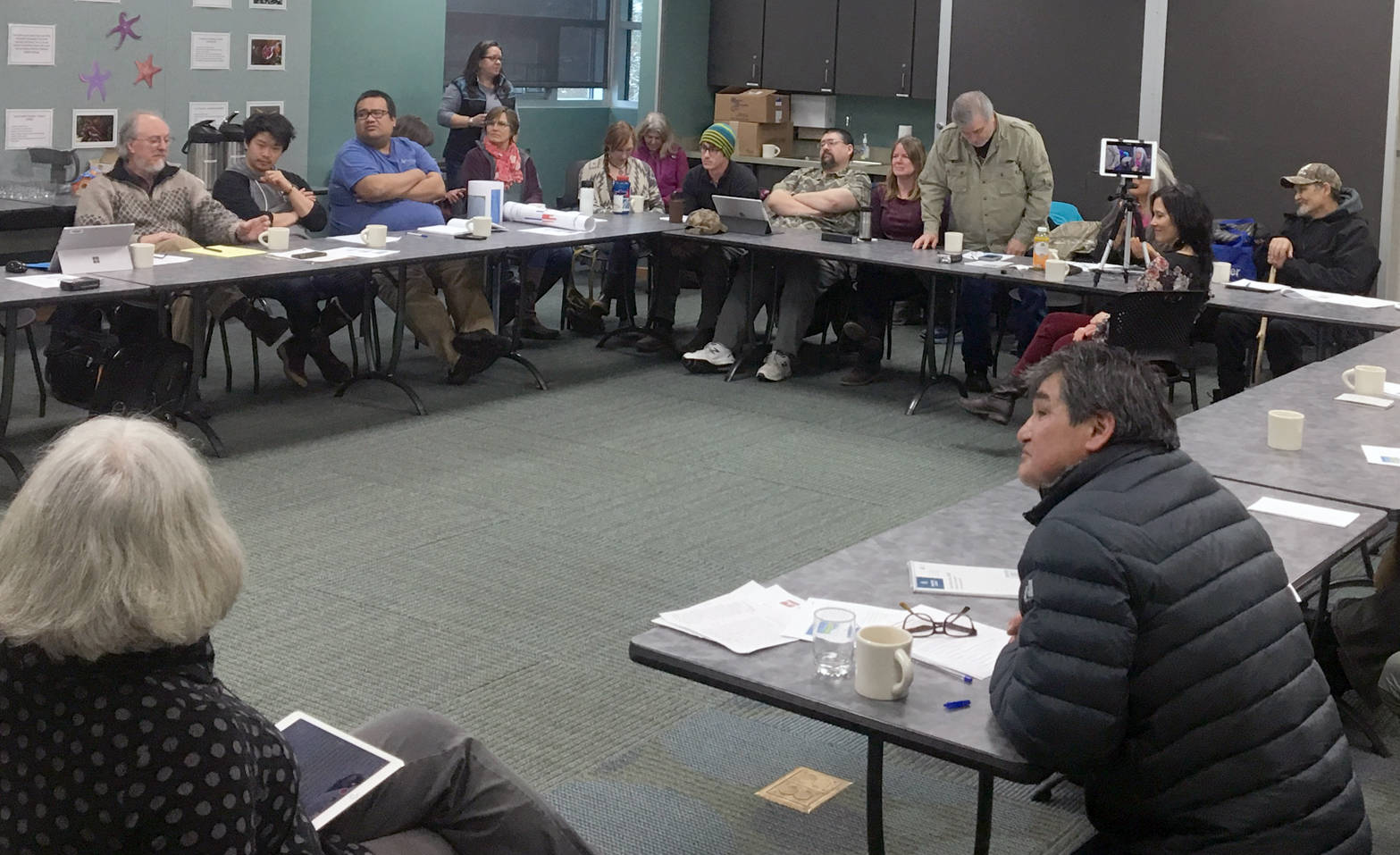I had the privilege last week to participate in an interesting workshop hosted by Chugachmiut, an Alaska Native nonprofit agency that serves seven villages in the Chugach region: Port Graham, Nanwalek, Qutekcak, Chenega Bay, Valdez, Tatitlek and Eyak. It was originally planned to be a meeting between tribal elders and Local Education Coordinators to discuss how best to introduce Traditional Ecological Knowledge (TEK) into school curricula. However, several local scientists, including a few from Outside who happened to be at the Kachemak Bay Science Conference in Homer, were invited to review their work.
Particularly in a world with global warming, where data sets for ecological systems are rarely long enough to address what is real change over long-term natural variation, TEK is advocated as a body of observational knowledge that can complement scientific knowledge. Western science is typically argued to be more rigorous, but consider that TEK is learned through trial-and-error over thousands of years. And, occasionally, if you get it wrong, you end up dead. Outcomes that severe are likely to pass whatever test for rigor you might come up with.
Sure enough, the natural resource issues brought up by elders were very much in-line with ones that a group of ecologists would likely have discussed for our local area. Tribal Chief Pat Norman from Port Graham discussed the importance of maintaining forested buffers along streams for salmon and around muskegs for moose when logging. Bill Smith, an Eyak elder, pointed out that the Valdez Glacier was once visible from the airport in Valdez, but it has now retreated too far up its terrestrial fjord to be seen. And hooligan used to run in that river but reportedly don’t anymore.
Patrick Selanoff, both tribal elder and commercial fisherman, mentioned that the mesh size of his net is now 4.25 inches for sockeye salmon, rather than the 5.25 inches he used not so long ago. Whether fish are getting smaller from harvest management or changing conditions at sea remains to be seen, but those kind of observations can serve as a working hypothesis in a more conventional scientific investigation to answer the why.
This same elder also mentioned his concern about marine ballast dumping from visiting cargo and cruise ships. He told a good story about a 125-pound grouper that showed up in the waters around Valdez, far north of its normal range … and how good it tasted. Mark King, from Cordova, spoke of a sighting of a sunfish in Hinchinbrook Pass, another fish species normally in the tropics. And last February, salmonberry was blossoming along with devil’s club in the Cordova area, both species out of phenological sync with each other and the season.
Western science sometimes struggles with these place-based observations because it is difficult to know if these anomalies are part of a larger spatial pattern or temporal trend. One way to call attention to all of these observations is by tracking them through an Alaska-centric online database such as the Local Environmental Observer (LEO) Network (https://www.leonetwork.org). In 2012, the Alaska Native Tribal Health Consortium launched the LEO Network to help the tribal health system and local observers share information about climate and other drivers of environmental change. In 2015, the LEO Network was recognized by the U.S. Chairmanship of the Arctic Council as a model program to help raise awareness and improve communication about climate change in the circumpolar region. Consider joining this network — data can be submitted via your smartphone through the LEO Reporter mobile app.
These are indeed strange times. We need to be receptive to other ways of knowing, such as TEK, particularly as communities and society at large adapt by necessity to a rapidly changing climate. Asked what message needs to be passed to the younger generation, Chief Norman suggested that we “use traditional values in our responsibilities toward the environment” rather than money as the primary metric. What a great lesson to learn and share!
Dr. John Morton is the supervisory biologist at Kenai National Wildlife Refuge. Find more information about the Refuge at http://www.fws.gov/refuge/kenai/ or http://www.facebook.com/kenainationalwildliferefuge

